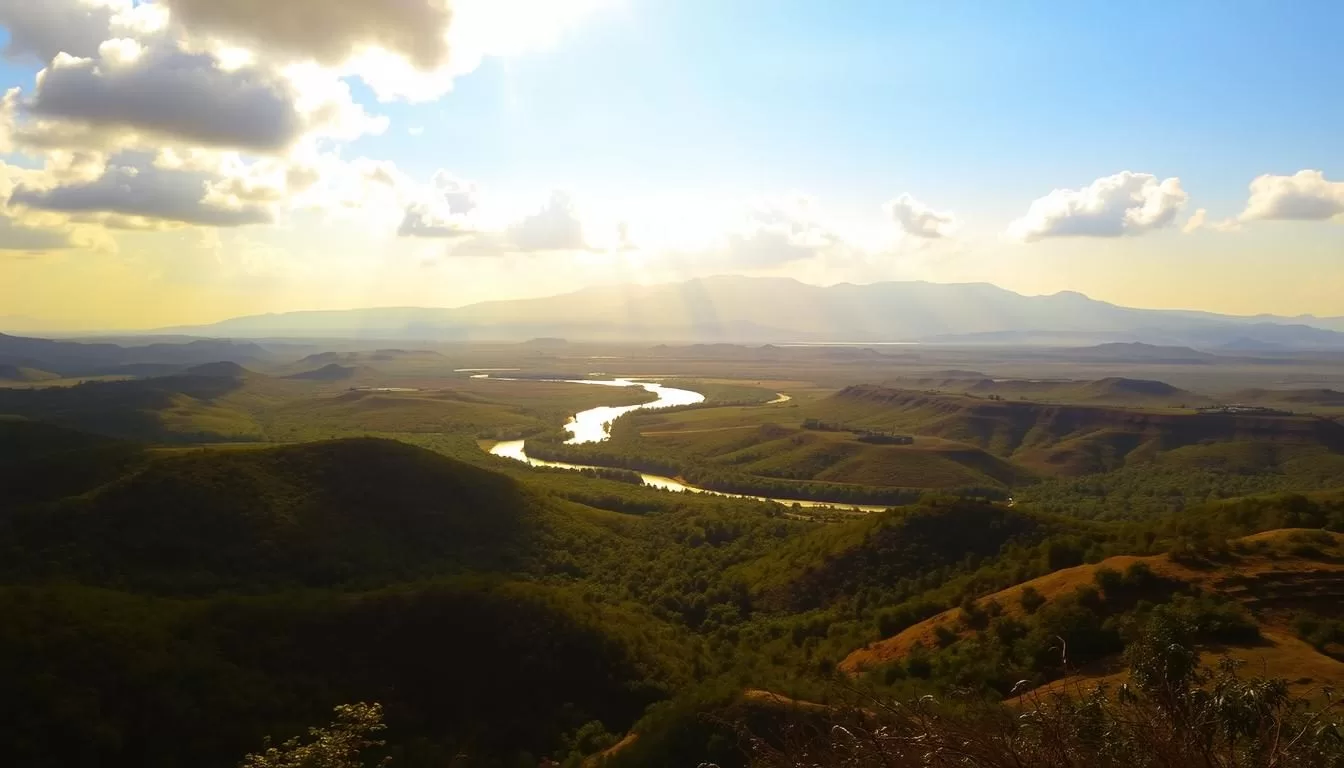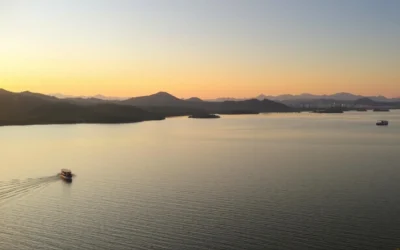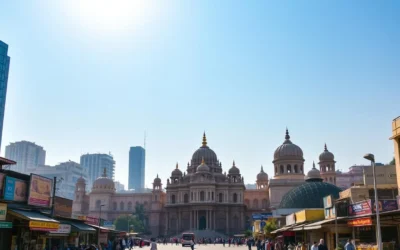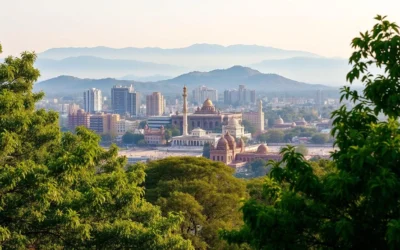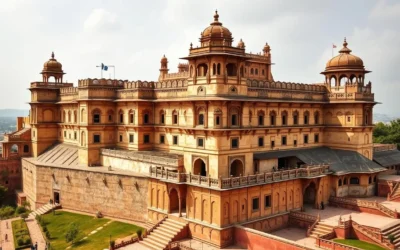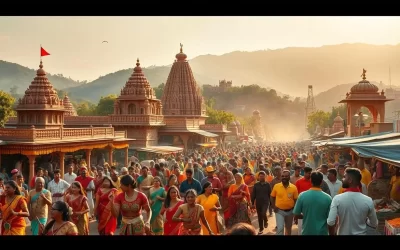✓ Accommodations✓ Flights✓ Rental Cars
When planning a trip to Madhya Pradesh, understanding the weather is crucial for a memorable experience. Known as the “Heart of India,” this region offers a diverse array of experiences, from ancient temples to thrilling wildlife safaris.
The weather in Madhya Pradesh varies significantly throughout the year, affecting travel comfort and activity options. To make the most of your visit, it’s essential to navigate the seasonal variations.
This guide will help you understand the climate patterns, ensuring your trip is perfectly timed. You’ll explore month-by-month conditions, regional variations, and activity-specific recommendations to maximize your sightseeing opportunities.
Discovering the Heart of India: Madhya Pradesh at a Glance
Madhya Pradesh, located in the heart of India, offers a rich tapestry of experiences influenced by its varied geography and climate. The state’s central position allows it to share borders with five other states, creating a unique blend of cultural and geographical diversity.
Geographic Location and Climate Zones
Madhya Pradesh occupies a significant position in central India, featuring a diverse topography that ranges from plateaus to river valleys. This varied geography results in several distinct climate zones, from the semi-arid western regions to the more humid eastern areas. The state’s diverse climate is characterized by hot summers and a very wet monsoon season, with significant rainfall during late June, July, August, and early September.
| Region | Climate Characteristics | Seasonal Variations |
|---|---|---|
| Western | Semi-arid | Hot summers, minimal rainfall |
| Eastern | Humid | Significant rainfall during monsoon |
| Central | Varied | Experiences both hot summers and cold winters |
Why Weather Matters When Planning Your Visit
Understanding the climate variations in Madhya Pradesh is essential as they directly impact your travel experience. The state’s three primary seasons – summer (March-June), monsoon (July-September), and winter (October-February) – each offer different advantages and challenges for travelers. Weather conditions significantly influence which activities are possible and enjoyable during your visit, from temple explorations to wildlife safaris.
For instance, the monsoon season, while bringing lush landscapes, can also cause flash floods and prolonged downpours, potentially disrupting travel plans. National Parks may be closed during this time, limiting wildlife viewing opportunities. Conversely, the winter season offers comfortable temperatures and clear skies, making it an ideal time for exploring the state’s rich cultural heritage and natural wonders.
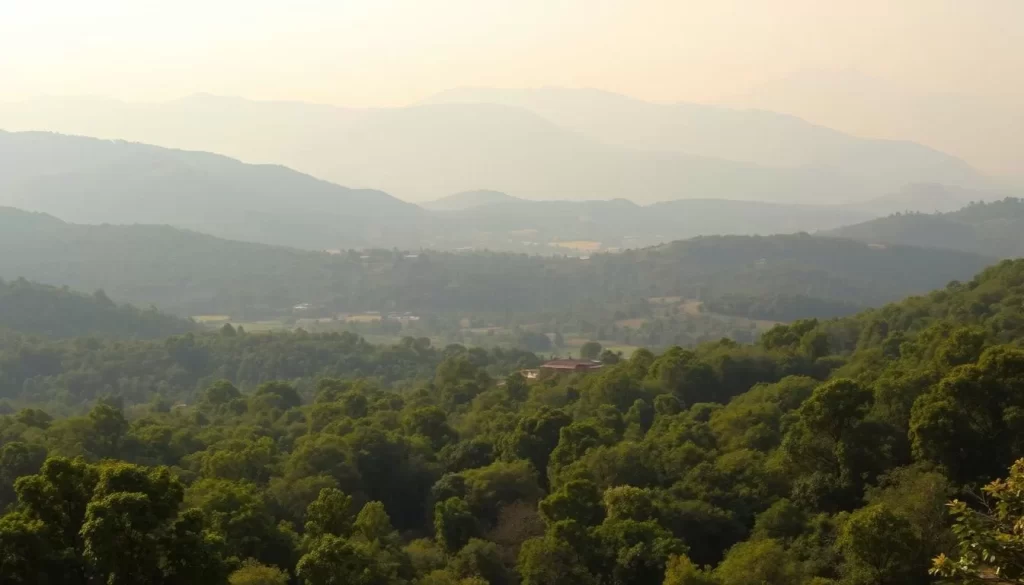
Madhya Pradesh’s Seasonal Weather Patterns
To make the most of your visit to Madhya Pradesh, it’s essential to know its seasonal weather patterns. The state’s climate varies significantly across different seasons, impacting tourist activities and experiences.
Summer Season (March to June)
Summer months (March-June) bring intense heat with temperatures regularly exceeding 40°C (104°F) in many parts of Madhya Pradesh, making midday outdoor activities challenging. However, if you’re visiting places like Mumbai, the coastal winds can keep temperatures relatively down. Inland, the mercury climbs into the 30s. Despite the heat, summer offers excellent wildlife viewing opportunities as animals gather around limited water sources in national parks. If you don’t mind the heat and are happy to start your day early, it’s a great time for game drives.
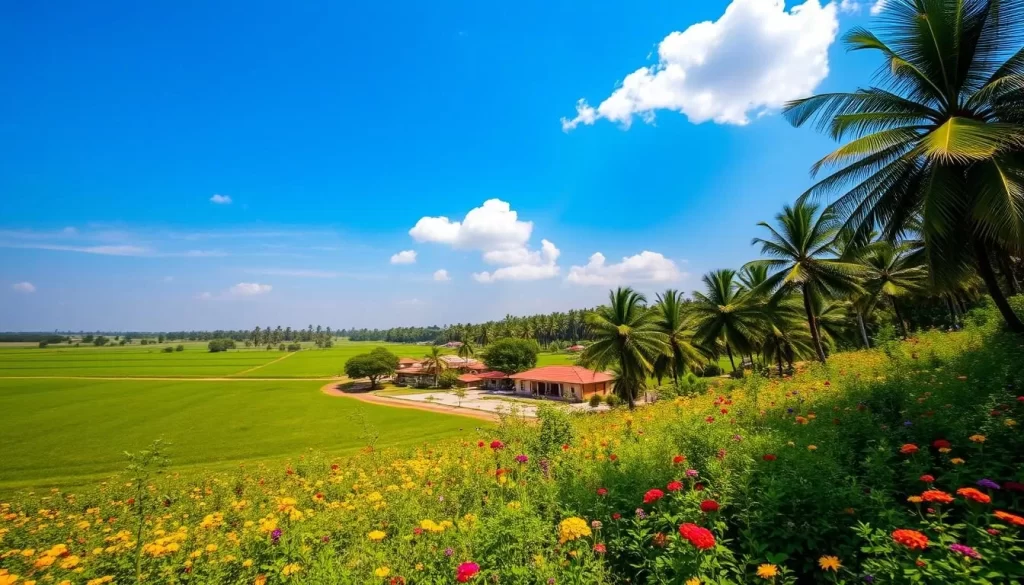
Monsoon Season (July to September)
The monsoon season transforms the landscape dramatically, bringing heavy rainfall between July and September that turns the state lush and green. During this time, humidity levels rise significantly, and some roads may become impassable. Many wildlife parks close for the season due to the rains. However, the monsoon brings a unique beauty to the region, making it a great time for those who enjoy the lush landscapes and don’t mind the challenges associated with heavy rainfall.
Post-Monsoon and Winter (October to February)
The post-monsoon and winter period is widely considered the most pleasant time to visit Madhya Pradesh, with comfortable temperatures and clear skies. Winter mornings can be foggy in some regions, but afternoons typically offer perfect conditions for sightseeing and outdoor activities. This period is ideal for exploring historical sites, enjoying nature, and experiencing the local culture without the harsh weather conditions of other seasons. It’s a great time of the year to appreciate the beauty of Madhya Pradesh.
October to March: The Golden Period for Madhya Pradesh, India: Best Months for a Weather-Savvy Trip
If you’re planning a trip to Madhya Pradesh, the golden period between October and March is your best bet for a weather-savvy journey. This duration is considered the best time to visit Madhya Pradesh, offering a blend of comfortable weather and enriching experiences.
Perfect Weather for Temple Tours and City Exploration
The weather during these months is ideal for exploring the state’s magnificent temples and archaeological sites like Khajuraho and Sanchi. With daytime temperatures ranging from 20-30°C (68-86°F), you can enjoy comfortable temperatures and clear skies, making it perfect for full-day sightseeing itineraries.
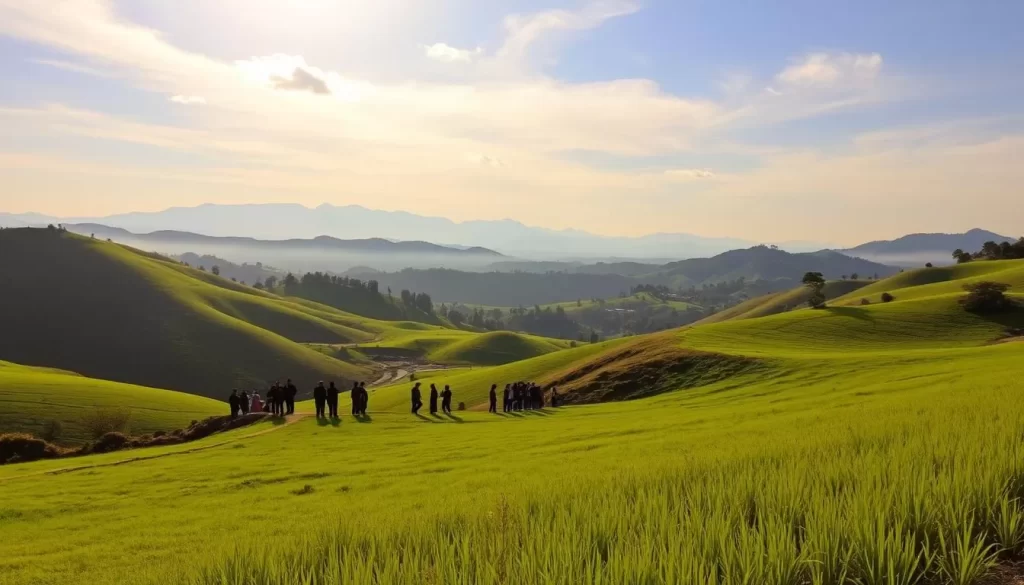
Comfortable Temperatures and Clear Skies
The comfortable temperatures and clear skies during October to March allow for uninterrupted exploration of Madhya Pradesh’s cities, including Bhopal, Indore, and Gwalior. Early morning fog may occur in December and January, but it typically clears by mid-morning, ensuring productive sightseeing days.
Festival Season Advantages
This period coincides with numerous cultural festivals, such as the Lokrang Festival in January and the Khajuraho Dance Festival in February, enhancing your cultural experience. You can immerse yourself in the local culture and enjoy the festivities, making your trip even more memorable.
Overall, visiting Madhya Pradesh between October and March offers a wonderful blend of pleasant weather, cultural experiences, and uninterrupted sightseeing opportunities, making it the golden triangle of travel in the region.
Wildlife Enthusiast’s Calendar: Optimal Months for Safari

If you’re heading to Madhya Pradesh for a wildlife adventure, knowing the best time for a safari can make all the difference. The region’s diverse wildlife, including the majestic tiger, can be spotted in various national parks, with the viewing experience significantly influenced by the season.
March to May: Prime Tiger Spotting Season
The period from March to May is considered prime for tiger spotting in Madhya Pradesh. As the summer heat intensifies, animals congregate around the limited water sources, making them easier to spot. Although the heat can be challenging, the thinner vegetation and predictable animal movements enhance the chances of viewing wildlife, especially tigers.
Bandhavgarh and Kanha National Parks
Bandhavgarh National Park, renowned for its high tiger density, offers excellent sighting opportunities from March through May. Similarly, Kanha National Park, the inspiration behind Rudyard Kipling’s “The Jungle Book,” is best visited between February and May. The dry conditions during these months improve visibility through the sal forests, increasing the likelihood of spotting wildlife.
Pench and Satpura: When to Visit
For those interested in exploring other national parks in the region, Pench National Park is ideal from February to April, while Satpura National Park is best visited between November and March. Early morning and late afternoon safaris are recommended during the summer months to avoid the midday heat and maximize wildlife sightings.
Understanding the seasonal patterns and optimal visiting times for Madhya Pradesh’s national parks can significantly enhance your wildlife safari experience. Whether you’re a seasoned wildlife enthusiast or just starting to explore the natural beauty of India, planning your visit during the right season is crucial for making the most of your adventure.
Summer Visits (April-June): Pros and Considerations
Summer in Madhya Pradesh, from April to June, presents both challenges and opportunities for travelers. While the heat can be intense, with temperatures often exceeding 40°C (104°F), this period offers several advantages for those who plan their visit strategically.
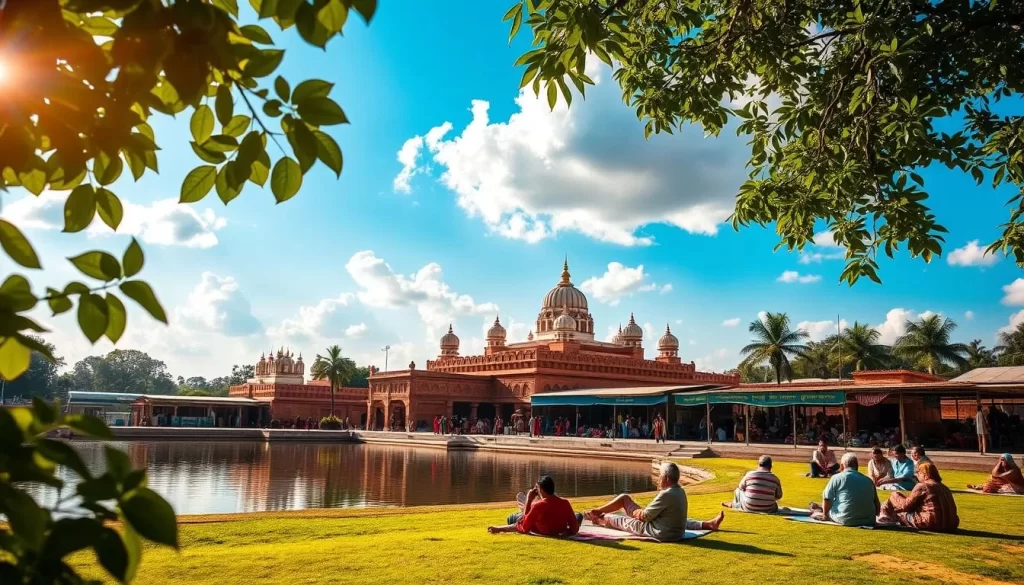
Wildlife Viewing Advantages
One of the significant benefits of visiting during the summer is the improved wildlife viewing experience. As water sources become limited, animals are drawn to the remaining waterholes and rivers, making them easier to spot. This predictable behavior allows for more successful wildlife safaris, particularly in national parks like Bandhavgarh and Kanha.
- Concentration of animals around water sources
- Enhanced spotting opportunities during safaris
- Better chances of viewing a variety of wildlife
Heat Management Strategies
Managing the heat is crucial during a summer visit. To make the most of your trip, plan your outdoor activities for the early morning and late afternoon when temperatures are relatively lower. Rest during the peak heat hours and stay well-hydrated throughout your visit. Lightweight, breathable clothing, wide-brimmed hats, and high-SPF sunscreen are essential items to pack.
Off-Season Benefits: Lower Crowds and Prices
Summer is considered off-peak, resulting in fewer tourists and several cost-saving benefits. You can expect lower accommodation rates, with many hotels offering discounts of 30-40% compared to peak season prices. This not only makes luxury accommodations more accessible but also provides a more personalized service experience due to the fewer crowds.
- Significant savings on accommodations
- Better availability at premium properties
- More personalized service experiences
Monsoon Season (July-September): Should You Visit?
The monsoon season brings a dramatic change to Madhya Pradesh, turning it into a green paradise, but with some practical challenges. As the region experiences heavy rainfall from July to September, it’s essential to weigh the advantages and disadvantages of visiting during this time.
The Lush Transformation of Landscapes
The monsoon transforms Madhya Pradesh into a vibrant landscape with lush greenery and flowing waterfalls, making it an ideal destination for photography enthusiasts. The magnificent waterfalls, such as Dhuandhar Falls in Jabalpur and Chachai Falls in Rewa, reach their peak during the monsoon months, creating breathtaking scenery.
Practical Challenges During Heavy Rainfall
However, the heavy rainfall between July and September also creates practical challenges, including potential flooding, slippery conditions at monuments, and temporary closure of many wildlife parks. The humidity levels rise significantly, often reaching 80-90%, which can make outdoor exploration uncomfortable without proper preparation.
Activities and Destinations That Work in Monsoon
Despite the challenges, the monsoon season offers unique advantages, including dramatically reduced tourist numbers and significant discounts on accommodations. Urban explorations in cities like Bhopal and Indore remain feasible during monsoon breaks, with many museums, galleries, and covered markets providing rainy-day activity options. You can enjoy a different perspective on the state’s natural beauty and experience the local culture without the crowds.
| Activity | Monsoon Advantages | Monsoon Challenges |
|---|---|---|
| Photography | Lush landscapes, waterfalls | Slippery conditions, limited outdoor access |
| Urban Exploration | Fewer tourists, discounts on accommodations | Rainy days, potential flooding |
| Wildlife Safari | – | National Parks closure, difficult terrain |
Month-by-Month Weather Guide for Madhya Pradesh
To make the most of your visit to Madhya Pradesh, it’s essential to know the month-by-month weather. The state’s diverse climate means that the weather varies significantly throughout the year, impacting the best time to visit various attractions and engage in different activities.
Winter Months: November to February
The winter months bring ideal conditions to Madhya Pradesh, making it one of the best times to visit. November is particularly pleasant, with daytime temperatures ranging from 25-30°C (77-86°F), low humidity, and clear skies, making it perfect for comprehensive exploration.
- December and January are characterized by pleasant daytime temperatures (20-25°C or 68-77°F) and cool nights (8-12°C or 46-54°F), requiring warm clothing for early morning activities.
- February sees a gradual warming trend, maintaining comfortable conditions ideal for both city exploration and wildlife viewing before the summer heat intensifies.
Summer and Pre-Monsoon: March to June
As summer approaches, the weather in Madhya Pradesh becomes increasingly hot. March marks the beginning of the warming trend, with temperatures climbing to 30-35°C (86-95°F), still comfortable for sightseeing but requiring midday breaks.
- April and May bring intense heat (35-45°C or 95-113°F) across most of the state, necessitating early morning and evening activities with substantial midday rest periods.
- By mid-June, the monsoon typically arrives, bringing relief from the heat but introducing heavy rainfall.
Monsoon and Post-Monsoon: July to October
The monsoon season continues through September, with July and August being the wettest months. While the heavy rainfall can be challenging, it also transforms the landscape into a lush, verdant scenery.
By October, the rains begin to subside, and the state starts to transition into the post-monsoon season, gradually leading into the comfortable winter months.
Regional Weather Variations Within Madhya Pradesh
The state’s vast territory results in significant regional weather variations. Madhya Pradesh, being one of the larger states in India, experiences a range of weather conditions across its different regions.
Northern vs. Southern Regions
The northern regions of Madhya Pradesh generally experience more extreme temperature fluctuations compared to the southern parts. This variation is due to the geographical characteristics of each area, with the northern regions being more prone to harsh winters and hotter summers.
Eastern vs. Western Districts
The western districts, including Indore and Ujjain, tend to be drier with less rainfall even during the monsoon season compared to the eastern regions like Jabalpur. The eastern parts receive higher average rainfall and maintain slightly higher humidity levels throughout the year due to their proximity to the Bay of Bengal weather systems.
Micro-Climates Around Major Attractions
The Vindhya and Satpura mountain ranges create distinct micro-climates, with higher elevations experiencing cooler temperatures and occasionally different rainfall patterns than surrounding lowlands. For instance, the Malwa Plateau in western Madhya Pradesh experiences more extreme temperatures, with hotter summers and cooler winters compared to other parts of the state.
Understanding these regional variations allows travelers to potentially “chase” better weather conditions within the state during shoulder seasons or plan region-specific visits during optimal weather windows. This knowledge can significantly enhance the travel experience in Madhya Pradesh.
Planning Your Trip: Matching Activities with Ideal Weather Windows
When planning your trip to Madhya Pradesh, it’s essential to match your activities with the ideal weather windows to make the most of your visit. The state’s diverse climate and seasonal variations offer a range of experiences, from exploring historical sites to enjoying wildlife adventures.
Historical Sites and Urban Exploration
For historical site exploration, including the UNESCO World Heritage Sites of Khajuraho Temples, Sanchi Stupa, and Bhimbetka Rock Shelters, the ideal weather window is November to February. Comfortable temperatures and clear skies make it perfect for sightseeing and exploring the rich cultural heritage. Urban exploration in cities like Bhopal, Indore, and Gwalior is also most comfortable between October and March.
Nature and Wildlife Experiences
Wildlife enthusiasts should plan their visits between February and May for optimal animal sightings. March and April offer the best balance between comfortable temperatures and wildlife viewing opportunities. Adventure activities like trekking in the Satpura Range or boating in the Marble Rocks of Bhedaghat are best enjoyed during the post-monsoon period (October-November).
Cultural Festivals and Events Calendar
The cultural calendar of Madhya Pradesh features numerous festivals worth planning around, including the Khajuraho Dance Festival (February), Lokrang Festival (January), and Tansen Music Festival (December). These events offer a unique glimpse into the state’s rich cultural heritage and are a great way to experience the local traditions.
Conclusion: Making the Most of Your Weather-Savvy Trip to Madhya Pradesh
To make the most of your journey to Madhya Pradesh, it’s essential to consider the optimal travel period. The best time to visit for most travelers is between October and March, offering comfortable temperatures and clear skies ideal for sightseeing and diverse activities. However, wildlife enthusiasts may prefer the pre-monsoon heat for exceptional animal sightings, while photographers might enjoy the dramatic landscapes post-monsoon.
Whatever season you choose, proper preparation and flexibility in your itinerary will significantly enhance your experience. Consider combining Madhya Pradesh with other Indian destinations that share optimal weather windows to maximize your overall travel experience in India.
The above is subject to change.
Check back often to TRAVEL.COM for the latest travel tips and deals.
